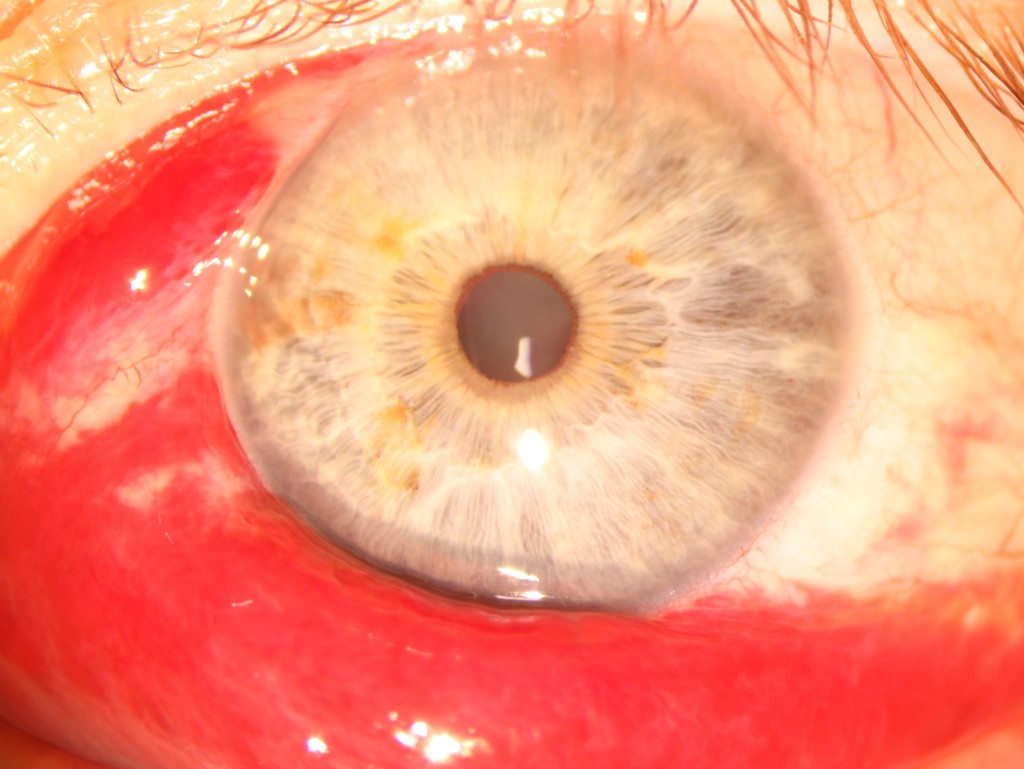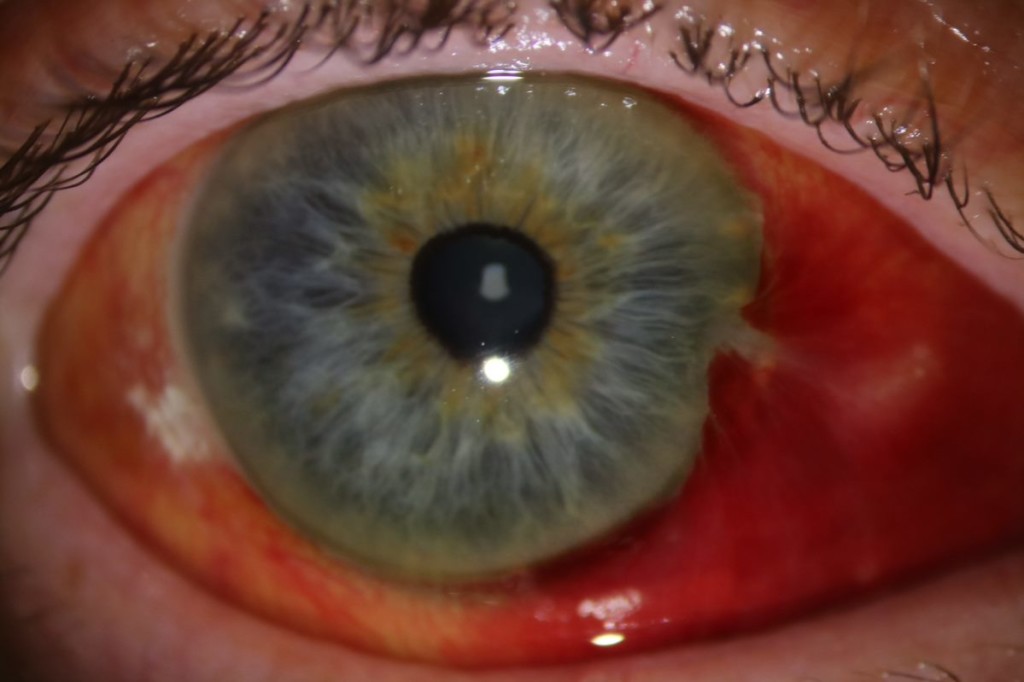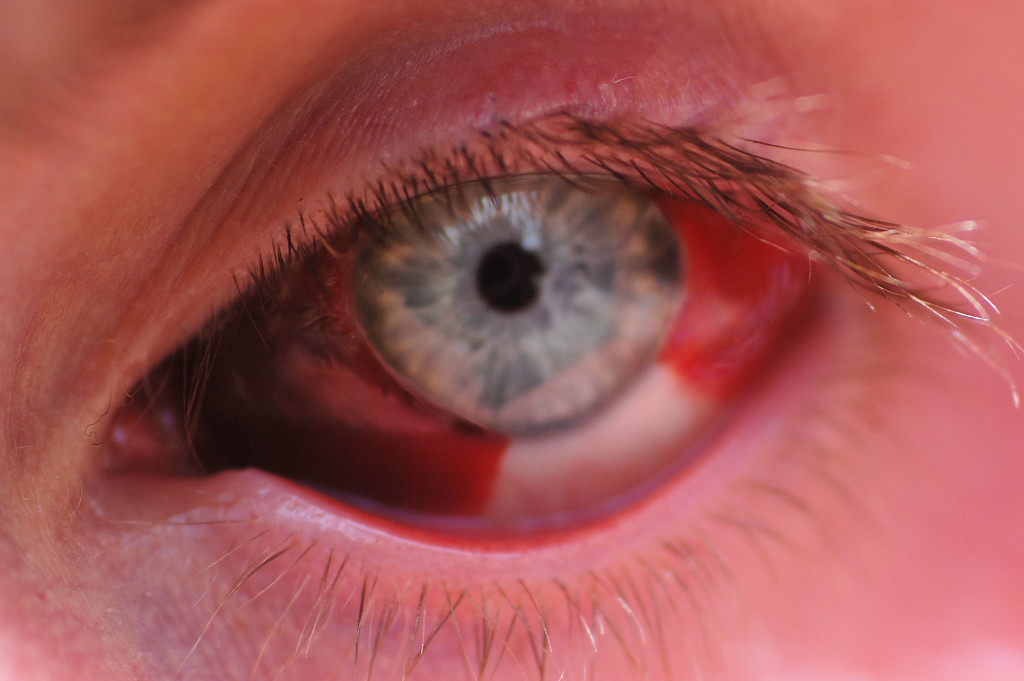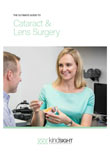The only thing scarier than the phrase ‘Subconjunctival Haemorrhage’ is the actual appearance of a subconjunctival haemorrhage in your eye. Often a bit gory and mistaken for an eye emergency, this phenomenon isn’t actually as serious as you may first think. Let us explain.
What is Subconjuncta?
To make sense of this condition, it helps to understand what the name means. In simple terms, ‘sub’ means below, ‘conjunctival’ relates to the conjunctiva and haemorrhage means ‘bleed’ – a bleed below the conjunctiva. The conjunctiva is a special type of skin that lines the inside of the eyelids and the surface of the eye. It is made of thin, clear tissue and many fine blood vessels.
If you’ve never seen one of these scary-looking bleeds, it appears as an area of blood on the white part of the eye. It may be very small or very large – sometimes covering the entire white part of the eye.
In most cases, a subconjunctival haemorrhage can look much worse than it really is. In fact, the vast majority of patients have absolutely nothing to worry about. The bleeding is not external, it is confined beneath the conjunctiva and cannot be wiped away with a tissue. Generally, it doesn’t affect your vision or cause significant pain, however, a mild ache or irritation is not uncommon.
Potential Causes of a Subconjunctival Haemorrhage
The blood vessels beneath the conjunctiva are very tiny and easily damaged, which can lead to a bleed. There are many scenarios that can cause these vessels to burst and, in most cases, the definite culprit may not be identified.
A subconjunctival haemorrhage can result from straining; for example, when you lift something heavy, or cough or sneeze vigorously. It is common to develop such a bleed following eye surgery or if you have a viral eye infection. You may also have heard of eye barotrauma, which occurs when divers develop such bleeds due to the build-up of pressure inside their mask during a dive. Subconjunctival haemorrhage can even be caused by minor trauma that you may not even notice or recall, which can be as simple as rubbing your eye.
Some people who experience this condition may be taking blood-thinning medication, such as Aspirin, Xeralto or Warfarin. There are also natural supplements like fish oil capsules and turmeric that cause the blood to thin. Both prescription medicines and over-the-counter products increase the risk of blood vessels bursting, resulting in a tendency towards bruising easily.
If you have recurring haemorrhages, in rare cases this can be caused by other conditions like blood disorders or abnormal blood vessels on the surface of the eye. If this sounds like you, you may need further investigation by your doctor.
How is it treated?
In most cases, there is nothing to be done except to be patient while your eye heals. Very similar to a bruise, a subconjunctival haemorrhage is usually gone within two weeks. It may at first become worse, before starting to fade. As it resolves it can transition through other colours, i.e. yellow, as the blood cells break down. Eventually, the bleed will completely disappear.
You should see your optometrist or ophthalmologist as soon as possible if you:
- have a subconjunctival haemorrhage that keeps recurring or won’t go away
- experienced a recent history of trauma
- are also experiencing blurred vision, pain or sensitivity to light.
Your eye doctor will thoroughly examine your eye and make sure there are no signs of other more sinister pathology causing your bleed.
In most cases of subconjunctival haemorrhage seen at KindSIGHT we aim to help you understand the nature of this condition and reassure you that you have absolutely nothing to worry about. Aside from the fact that you may receive a few strange looks and concern from friends until your bleed resolves!






